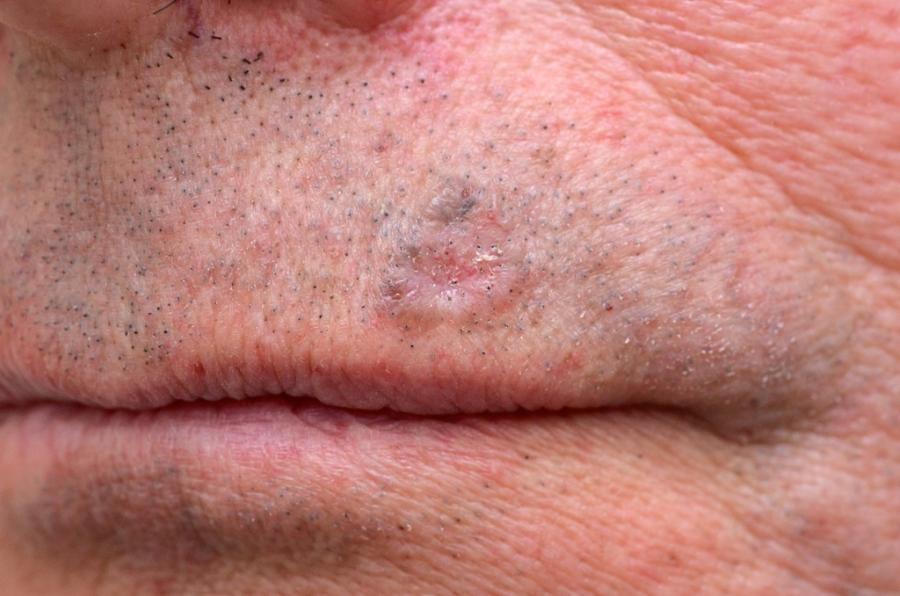The most common forms of skin cancer in Australia are basal and squamous cell tumours. In the vast majority of cases these skin cancers do not spread to lymph nodes or other parts of the body. Nonetheless these tumours can, if neglected or inadequately treated, invade locally to cause significant problems including damage to underlying or adjacent bone, cartilage, nerves or vessels.
Basal and squamous cell cancers (BCC & SCC) evolve from keratinocytes, the cells that form the substance of the epidermis, based at the junction between the epidermis and subjacent dermis. These cells are vulnerable to damage from solar exposure. Melanoma is potentially a substantially more malignant tumour that arises from the pigment producing melanocytes that a much fewer in number and are mostly located as scattered cells, interspersed between the basal keratinocytes at the interface between the dermis and overlying epidermis (demo-epidermal junction).

Basal Cell Carcinoma on upper lip
This basal cell cancer had grown slowly over several years. Initially the patient was just appear of subtle scaling and a little thickening at the site. The area subsequently became more thickened waxy lump, some prominent fine capillaries, and intermitently ulcerated centrally. Only a proportion of all BCC’s demonstrate ulceration.

Squamous Cell Carcinoma behind ear. The central portion of the tumour has ulcerated.
This squamous cell cancer grew more rapidly over just a few months and quickly ulcerated. It became attached to the underlying cartilage and removal required a skin graft repair.
A significant proportion of basal and squamous cell cancers that are referred to me (as a Plastic Surgeon) can be managed in our office procedure room on an outpatient basis. This involves the use of local anaesthetic, a single use sterile instrument pack, suture repair and simple dressings. These dressings are almost invariably removed within 12-24 hours, and the wound then washed / showered daily. Suture removal may occur between 5 days and 3 weeks depending site of the skin cancer, tension on the wound closure and the patients planned level of activity.
When basal and squamous cell cancers are larger or located on cosmetically challenging sites, these are often managed as day surgery or inpatient cases. This can be an very comfortable way to have these skin cancers managed. Patients can often have their surgery with twilight sedation and spend only a few hours in day surgery unit, including time for coffee, tea and a sandwich after the procedure before discharge home.
All skin cancers removed by excision are submitted to examination by a Pathologist to confirm the exact nature of the tumour and ensure that complete removal with an appropriate margin has been achieved.